Oracle ERP vs SAP ERP
May 27, 2023 | Author: Michael Stromann
14
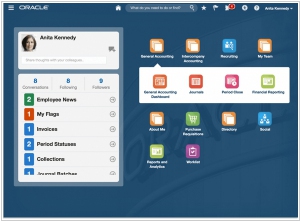
Oracle Enterprise Resource Planning (ERP) Cloud is a suite of cloud applications for finance, project management, procurement, risk management, and other core day-to-day activities important in every business, regardless of size, industry, or geography. Designed from the ground-up with a modern architecture and technology, Oracle ERP Cloud is natively connected with all Oracle enterprise cloud applications and scales inherently to support added users, transactions, and sites as your business grows by size and into new markets across your country or the globe.
24
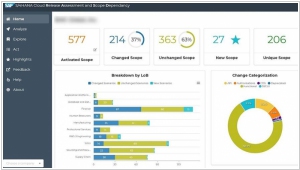
SAP’s intelligent ERP solutions are the Digital Core that enable businesses to integrate end-to-end cross functional next generation business processes so that companies can become intelligent. SAP's cloud ERP solutions use intelligent technologies to help you grow, innovate, and optimize time and resources – no matter the size of your business.
Oracle ERP and SAP ERP are two prominent enterprise resource planning (ERP) solutions that offer comprehensive business management functionality to organizations.
Oracle ERP, developed by Oracle Corporation, is a robust and scalable ERP system that covers a wide range of business processes including financial management, supply chain management, procurement, human resources, and customer relationship management. It provides a unified platform for streamlining and automating business operations, enabling efficient resource allocation, and facilitating data-driven decision-making. Oracle ERP offers extensive customization options, industry-specific modules, and integration capabilities with other Oracle applications.
SAP ERP, developed by SAP SE, is another leading ERP solution known for its wide adoption across industries. SAP ERP offers a suite of integrated modules that cover key business functions such as finance, sales and distribution, procurement, manufacturing, and human capital management. It provides a centralized database and real-time analytics for enhanced visibility and control over business operations. SAP ERP is known for its strong focus on industry best practices, global compliance, and extensive reporting and analysis capabilities.
See also: Top 10 Online ERP software
Oracle ERP, developed by Oracle Corporation, is a robust and scalable ERP system that covers a wide range of business processes including financial management, supply chain management, procurement, human resources, and customer relationship management. It provides a unified platform for streamlining and automating business operations, enabling efficient resource allocation, and facilitating data-driven decision-making. Oracle ERP offers extensive customization options, industry-specific modules, and integration capabilities with other Oracle applications.
SAP ERP, developed by SAP SE, is another leading ERP solution known for its wide adoption across industries. SAP ERP offers a suite of integrated modules that cover key business functions such as finance, sales and distribution, procurement, manufacturing, and human capital management. It provides a centralized database and real-time analytics for enhanced visibility and control over business operations. SAP ERP is known for its strong focus on industry best practices, global compliance, and extensive reporting and analysis capabilities.
See also: Top 10 Online ERP software
Oracle ERP vs SAP ERP in our news:
2021. SAP is buying Berlin business process automation startup Signavio
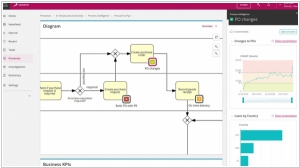
SAP has recently completed its acquisition of Signavio, a business process automation startup, for approximately $1.2 billion. This move reflects SAP's recognition of the value in adopting a more modern and cloud-native approach to address the challenges of enterprise business process automation. The ability to automate business processes through the cloud has gained significant importance, especially during the pandemic when remote work has become prevalent. By incorporating Signavio's cloud-native tool into its portfolio, SAP aims to enhance its capabilities in automating and optimizing business processes. SAP also views Signavio as a valuable addition to its business process intelligence unit, filling a crucial gap in its offerings.
2014. Oracle E-Business Suite unveiled cloud-centric apps
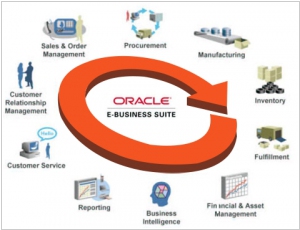
Oracle has recently updated its ERP solution, E-Business Suite, with enhanced integration with the company's cloud services and improved tablet compatibility. The Financials module now integrates with Oracle Revenue Management Cloud, allowing users to take advantage of the revenue compliance and recognition benefits offered by that product. Furthermore, enhancements in Project Contracts and Project Billing enable U.S. federal contractors to optimize cash flow, increase transparency, and automate billing processes. The Purchasing module has also received improvements to enhance buyer productivity when handling large orders. These changes include the introduction of Web ADI-enabled spreadsheet creation and modifications to purchase order lines, schedules, and distributions. Web ADI, also known as Applications Desktop Integrator, is Oracle's tool for integrating its applications with Microsoft Excel.
2012. SAP became NetSuite's customer. Business ByDesign will be closed
Most of all NetSuite loves trolling its rival - SAP. From time to time they organize anti-SAP conferences, marketing campaign a la Business ByNetsuite and produce videos like that one above. And they haven't missed the opportunity to joke on SAP at this time. At the opening of the conference SuiteWorld, Zach Nelson (CEO of NetSuite) took the stage and announced that in the past year the company has achieved their biggest ever win: ERP-giant SAP has become NetSuite's customer. The audience was shocked, and then Zach explained. ***
2011. SAP embracing Amazon and Microsoft clouds

SAP is the most slow IT giant in terms of transition to the cloud technologies. Nevertheless, it's the world's largest software company and any of its steps to the Cloud serves as an indicator for all large corporations: "if even SAP released a SaaS-solution, then SaaS-solutions can indeed be trusted" or "if even SAP offers a version for Amazon Web Services, than this platform is really enterprise-ready". This week at the SAPPhire conference, the company reported on its cloud transition steps. First of all, the SaaS ERP-service SAP Business ByDesign is already used by 500 with a target of having 1000 signed up by the end of the year. Second, SAP has announced that it's "launching" the SaaS CRM-service SAP Sales OnDemand, which will be followed by a travel management cloud service and an on-demand suite for talent management. And third, SAP has started to adapt its existing systems for the Amazon and Microsoft cloud platforms. ***
2010. Who says Enterprise Software isn’t Cool? Watch what its users can do!
In addition to focusing on new business applications and modern trends in Enterprise software, we also pay attention to how vendors promote themselves and their products. This area is shifting towards the Enterprise 2.0 style, where traditional PowerPoint presentations and image-less PDF brochures are being replaced by captivating blockbusters and show-projects. Instead of mundane descriptions, we now encounter humorous sketches illustrating the consequences of running a business without the software. Such marketing strategies grab attention and, most importantly, foster a sense of affinity towards the software, even if the software itself is not particularly user-friendly, as is the case with SAP. SAP's latest show-project, Run Better, focuses on showcasing the remarkable achievements of its users rather than emphasizing the ERP system itself. Additionally, other examples of captivating marketing can be found from Box.net, Mainsoft, and NetSuite.
2010. SAP Business ByDesign goes live
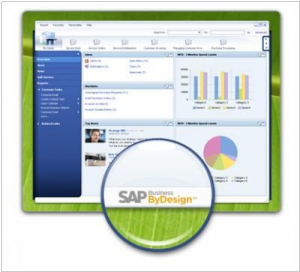
Finally, SAP has officially launched its SaaS ERP system, SAP Business ByDesign, which will compete with NetSuite, Workday and other cloud ERP solutions. As you know, it's not a fresh product. It was released 3 years ago, but due to the scalability problems, its sales were stopped, and still the system was used by fewer than 100 companies worldwide. SAP Business ByDesign is designed for SMB (50-500 employees) and primarily for manufacturing and professional services industries. It's a single multitenant service to automate all business areas, including manufacturing, financials and sales. The updated version SAP Business ByDesign 2.5 provides support for mobile devices, integration with MS Excel, custom forms and user interface based on Silverlight. But its pricing will hardly cause a revolution in SaaS sphere. ***
2010. SAP acquired Sybase to get the cloud database and mobile apps
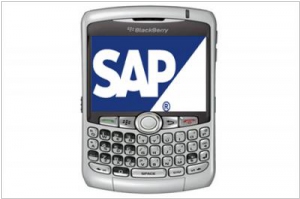
The world's largest enterprise software vendor, SAP has become even more large. For $5.8 billion SAP has acquired Sybase, the company primarily known as one of the leading database and enterprise mobile applications vendor. Until now, SAP didn't have its own database and provided customers a freedom of choice in this matter. At the same time SAP was reselling about a billion dollars worth of Oracle databases - a bad idea considering SAP and Oracle are in direct competition. However, it is unlikely that Sybase database will replace all other database middleware in the traditional SAP ERP deployments. On the other hand, it can be very useful for cloud deployments and creation of the own SaaS platform for SAP Business ByDesign. Because Sybase has recently released the cloud version of its database, which is primarily designed for Amazon EC2. ***
2008. ByDesign, the younger person’s ERP
SAP is targeting small and mid-sized family-owned businesses, particularly in manufacturing, distribution, and retail, with its Business ByDesign SaaS offering. The company believes that the younger generation of these families, who are computer-savvy and independent decision-makers, will be attracted to ByDesign. Many of these businesses recognize the need to increase their use of software automation, as they face pressure to deliver quality and streamline processes. SAP's reputation and brand name make it more appealing to persuade the older generation to support the project compared to web-native startups like NetSuite. However, SAP also faces internal challenges in bringing Business ByDesign to market, with a focus on reducing total cost of ownership (TCO) and streamlining the sales process. While progress has been made, SAP has decided to decelerate the go-to-market plan, limiting the initial rollout to select countries and extending the release date. The company is investing significant resources to ensure the success of the first wave of customers. SAP is exploring the addition of new features and refining target industries and profiles, but the key factor lies in identifying and nurturing a new type of partner that can offer continuous consulting and business expertise. Early customers have shown enthusiasm for the product, but the project faces commercial challenges, relying on future product features and a channel that is yet to be established. Despite suggestions of spinning off Business ByDesign as an independent venture, SAP intends to keep it within the company and adapt to the required development process. The success of ByDesign within SAP's constraints remains uncertain.




